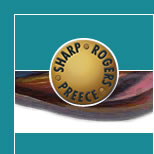 |
Chapter Introduction
| Web Resources | Assignment
Comments | Teaching
Materials
This is a challenging assignment with a lot of designing to be done. Below we list some observations to help you be more creative in your attempts.
- For this assignment don't be constrained by what you know currently. By all means suggest a conceptual design based around a desktop WIMP interface paradigm, but also consider other paradigms: what would the online system be like if it was accessible through the 'hole in the wall' technology as used for ATMs?
- Seek out alternative example systems. Not necessarily ticket booking systems, but systems for making appointments, booking hotel rooms, ordering takeaway food, and so on. See what ideas these systems may offer you.
- The shopping cart is a common metaphor for purchasing items across the internet. However, is it suitable for this environment? Will users be comfortable with it?
- Look out for any metaphors that arise from your data gathering. Do users consistently refer to any particular metaphor or experience?
- Will you have one system for larger, static computers and one for handheld devices such as PDAs and cell phones whose screen requirements and constraints are quite different?
- You could try using the DENIM storyboarding software in this assignment, described in the interactivity section on this site.
- You will have collected functionality requirements in the assignment at the end of Chapter 10. You can now choose which functions you're going to support and which you're not. You can restrict operation as much or as little as you like, but be aware of the consequences!
- Follow the steps in Chapter 11 for producing the prototypes from the requirements activity outputs. You may find that initially this produces uninspiring designs, but once you have the basics, expand the ideas and seek alternatives to be creative.
|
  
|
